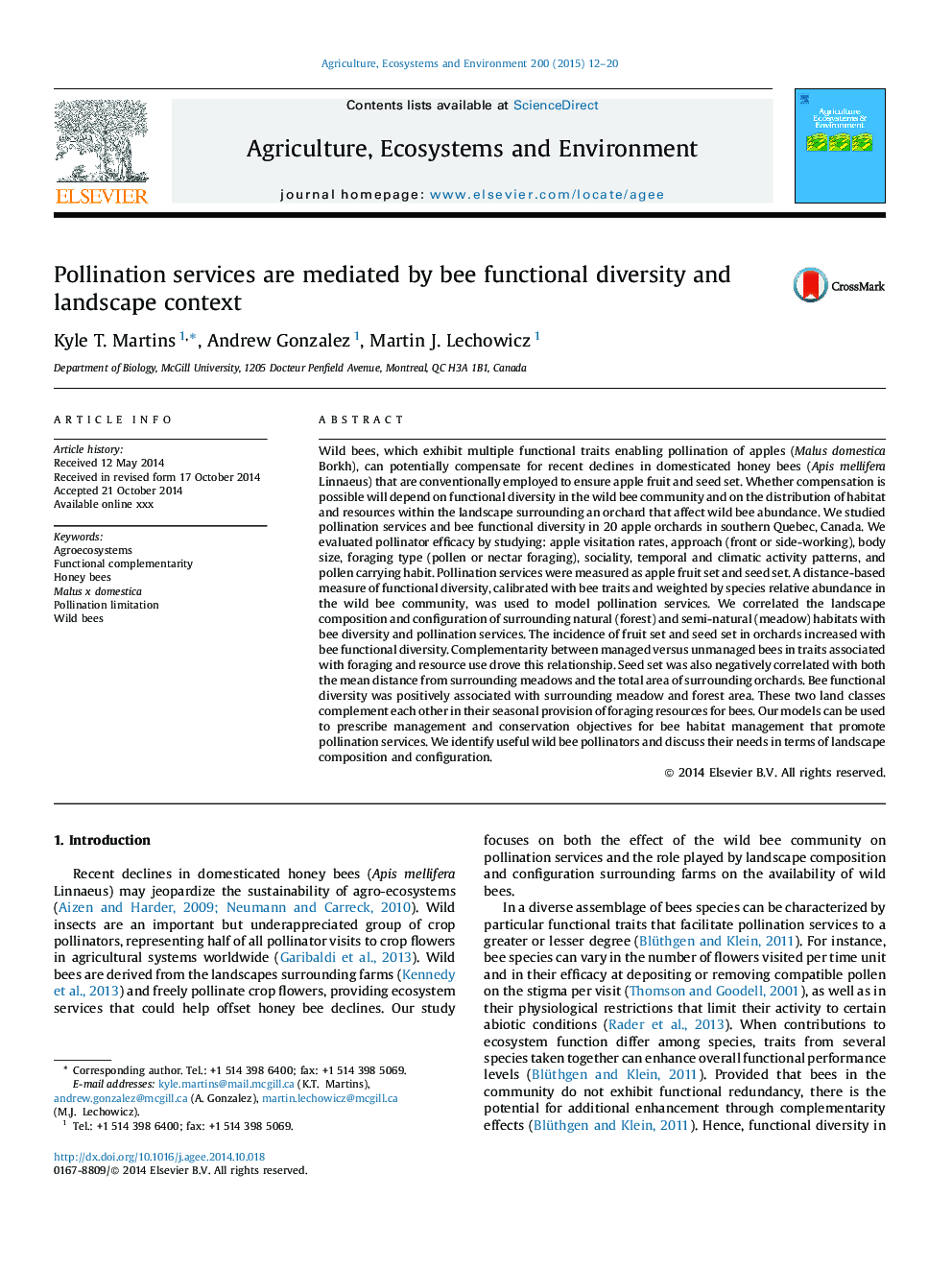| کد مقاله | کد نشریه | سال انتشار | مقاله انگلیسی | نسخه تمام متن |
|---|---|---|---|---|
| 8487782 | 1552052 | 2015 | 9 صفحه PDF | دانلود رایگان |
عنوان انگلیسی مقاله ISI
Pollination services are mediated by bee functional diversity and landscape context
ترجمه فارسی عنوان
خدمات گرده افشانی بر اساس تنوع عملکردی زنبور عسل و زمینه چشم انداز است
دانلود مقاله + سفارش ترجمه
دانلود مقاله ISI انگلیسی
رایگان برای ایرانیان
کلمات کلیدی
موضوعات مرتبط
علوم زیستی و بیوفناوری
علوم کشاورزی و بیولوژیک
علوم زراعت و اصلاح نباتات
چکیده انگلیسی
Wild bees, which exhibit multiple functional traits enabling pollination of apples (Malus domestica Borkh), can potentially compensate for recent declines in domesticated honey bees (Apis mellifera Linnaeus) that are conventionally employed to ensure apple fruit and seed set. Whether compensation is possible will depend on functional diversity in the wild bee community and on the distribution of habitat and resources within the landscape surrounding an orchard that affect wild bee abundance. We studied pollination services and bee functional diversity in 20 apple orchards in southern Quebec, Canada. We evaluated pollinator efficacy by studying: apple visitation rates, approach (front or side-working), body size, foraging type (pollen or nectar foraging), sociality, temporal and climatic activity patterns, and pollen carrying habit. Pollination services were measured as apple fruit set and seed set. A distance-based measure of functional diversity, calibrated with bee traits and weighted by species relative abundance in the wild bee community, was used to model pollination services. We correlated the landscape composition and configuration of surrounding natural (forest) and semi-natural (meadow) habitats with bee diversity and pollination services. The incidence of fruit set and seed set in orchards increased with bee functional diversity. Complementarity between managed versus unmanaged bees in traits associated with foraging and resource use drove this relationship. Seed set was also negatively correlated with both the mean distance from surrounding meadows and the total area of surrounding orchards. Bee functional diversity was positively associated with surrounding meadow and forest area. These two land classes complement each other in their seasonal provision of foraging resources for bees. Our models can be used to prescribe management and conservation objectives for bee habitat management that promote pollination services. We identify useful wild bee pollinators and discuss their needs in terms of landscape composition and configuration.
ناشر
Database: Elsevier - ScienceDirect (ساینس دایرکت)
Journal: Agriculture, Ecosystems & Environment - Volume 200, 1 February 2015, Pages 12-20
Journal: Agriculture, Ecosystems & Environment - Volume 200, 1 February 2015, Pages 12-20
نویسندگان
Kyle T. Martins, Andrew Gonzalez, Martin J. Lechowicz,
